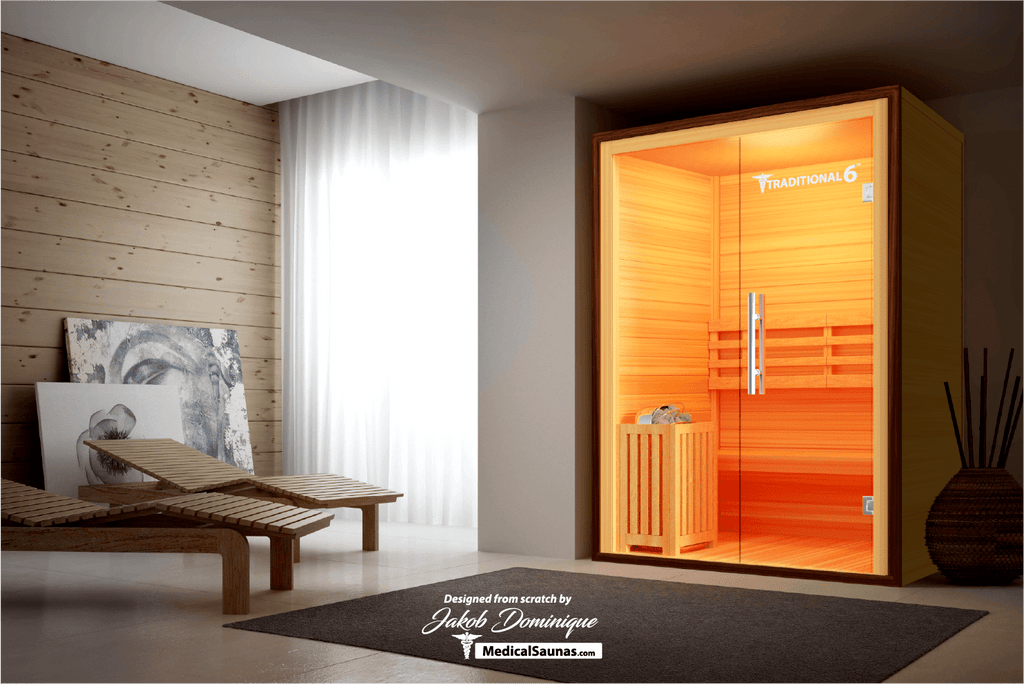About Traditional Sauna
About Traditional Sauna
Blog Article
An Unbiased View of Traditional Sauna
Table of ContentsThe Ultimate Guide To Traditional Sauna10 Simple Techniques For Traditional SaunaAll About Traditional SaunaSome Ideas on Traditional Sauna You Should KnowOur Traditional Sauna Statements
Most of the weight shed in a sauna is water loss and is re-gained upon rehydrating. Without a doubt sauna can be an essential part of a healthy weight loss program. To check out the distinctions between standard and IR saunas, I will certainly divide these right into proven, academic, and produced differences.Therefore, the most popular point in the saunawhich is at the ceiling directly over the sauna heateris typically between 185 and 190 F. Claims that a standard sauna surpasses 200 F is just not true and not applicable for electric saunas marketed in the United States. The temperature level for a far-infrared sauna is generally established between 120 and 140 F; nevertheless, unlike the conventional sauna, the goal in and IR area is not to attain a heat.
Due to this, the temperature difference is virtually unnecessary, considering that excessive sweating results in both sauna kinds, yet the technique of heating the body is various. In an IR sauna the bather will feel warm and will sweat profusely, yet at much lower temperature levels. Traditional Sauna. Therefore, if the goal is to invest longer periods of time in the sauna, the IR sauna is a good selection

The Facts About Traditional Sauna Uncovered

When the heat is accomplished, the aspects cycle on and off to keep the heat. Traditional Sauna. Most traditional sauna users delight in pouring water over the rocks to produce steam to raise sauna humidity levels. The benefits of putting water over the rocks consist of: making the area extra comfy, dampening the nasal flows, and enabling the use of aromatherapy by mixing vital oils with the water
In a far-infrared sauna, the warm waves permeate the body to efficiently heat the body and raise the body core temperature. To attain this raised temperature level, Far-infrared emitters produce infrared energy which is close to the same wavelength as that which the body normally emitsoften described as the "Crucial Variety" of 7 to 14 microns), so the energy is well received by the body.
When the energy enters the body, it causes the body temperature level to increase and ultimately results in sweat. In an infrared sauna it is necessary for the emitters/heaters to continue to be on virtually regularly. Since there is no mass of rocks to retain warmth, the sauna will certainly cool if the emitters shut down.
The Facts About Traditional Sauna Uncovered
As mentioned over, the sauna bather in an infrared room wishes to position himself before operating emitters to obtain maximum gain from the heat. The heating time for the 2 spaces can be really different, relying on exactly how the areas are utilized. For a traditional sauna, a bather must allow 30-40 minutes for the area to achieve browse around here a wanted temperature and to appropriately pre-heat the rocks.
A well constructed sauna will normally attain a temperature of 150-160 F in regarding 30-40 mins. For hotter temperature levels, the area may need to warm for a longer duration.

Standard saunas have a tendency to be larger (hence make use of even more electrical energy) than infrared saunas, although conventional saunas are certainly available in one and two person sizes. For a two-person traditional sauna, 5x6 or 5x7 size is most preferred. The leading bench can easily seat two or 3 people and is also long sufficient to rest during the sauna session.
Traditional Sauna - Questions
The ordinary cost per kWH of electricity in the U.S. is approximately $0.11 - Traditional Sauna, so a 4.5 kW heating unit will certainly cost around $.50 to run for one hour, if the heating unit runs continually for one hour. Usually a sauna heater will compete 75% of the first hour and 50% of subsequent hours on given that the elements cycle once the set temperature level is achieved
A two individual far-infrared area is usually physically smaller sized than a conventional this sauna, usually about 4' x 4' or smaller. The IR home heating system is typically 1.5-1.7 kW utilizing a 120 volt 15 amp plug-in solution. Since the room can be utilized earlier than a sauna area, we will presume the space is made use of for to of an hour consisting of heat up time.
There is a seldom reviewed distinction in the social experience in between the 2 areas. While our society has shed several of the social advantage of the traditional sauna experience, i was reading this it can be very socially gratifying. From household time in the sauna, to heart-felt discussions with loved ones, to sauna partiesthe typical sauna experience can bring about intimate mingling.
Getting My Traditional Sauna To Work
A lot of higher end infrared areas include tinted light therapy, audio systems and full-glass fronts.
Report this page